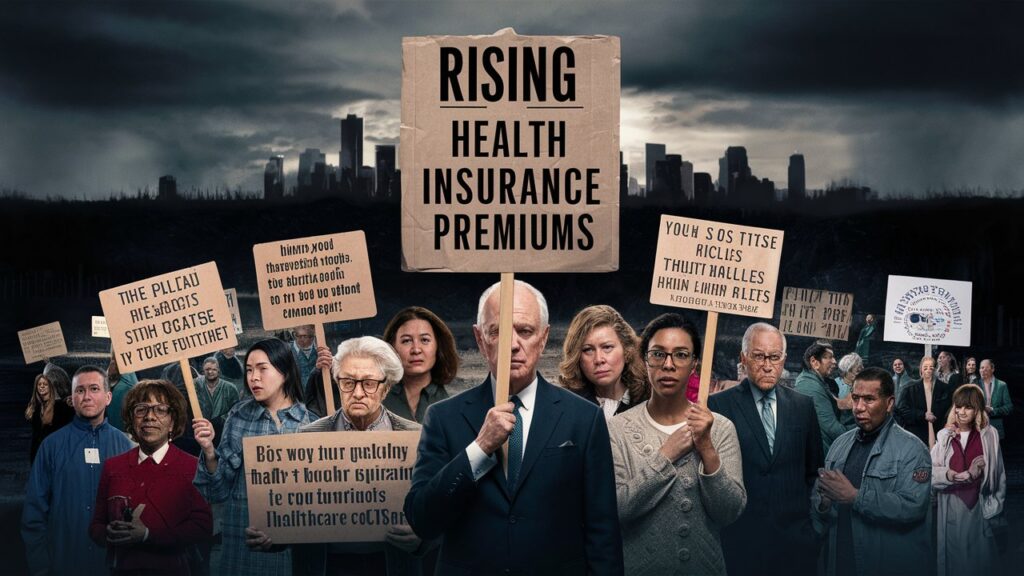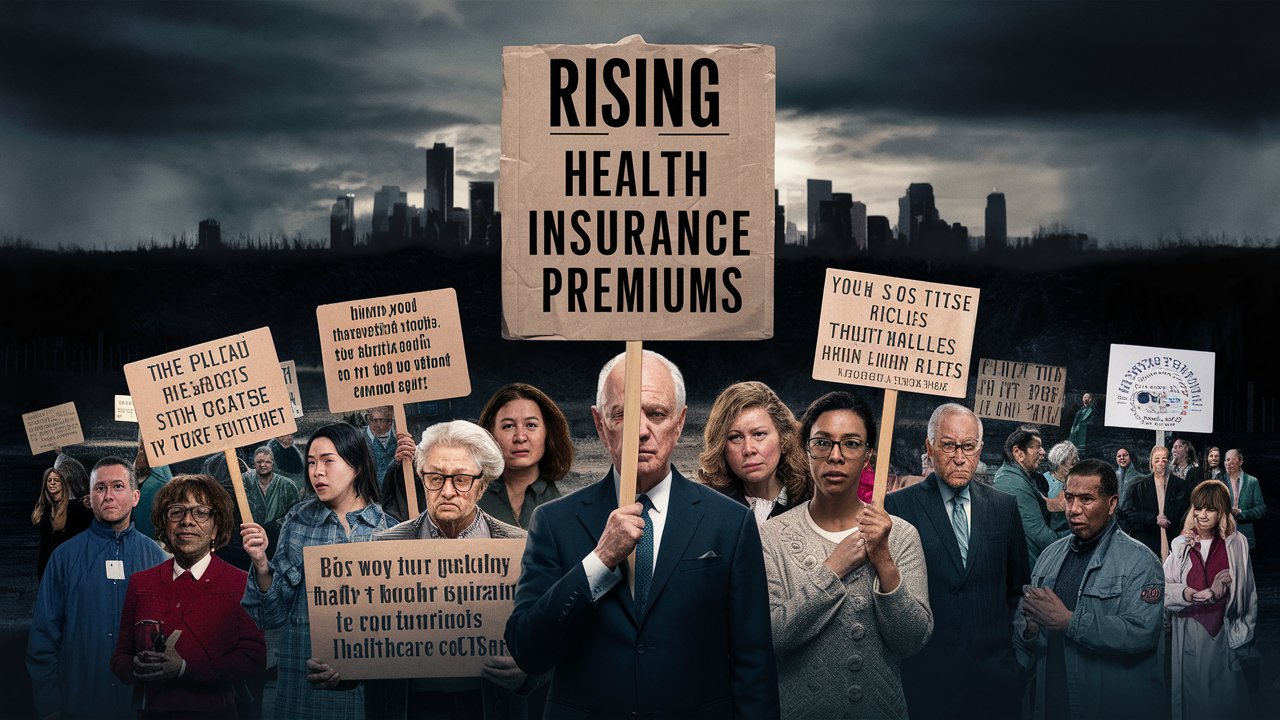Health insurance premiums are the amounts paid, often on a monthly basis, by individuals or employers to maintain health insurance coverage. These payments ensure that policyholders have access to medical services, prescription drugs, and other healthcare benefits as outlined in their insurance plans.

Importance of Understanding Premium Increases
Understanding why health insurance premiums increase is crucial for managing personal and family finances. As premiums rise, they can significantly impact household budgets, leading to difficult choices about coverage and care. Moreover, comprehending the factors behind these increases helps consumers make informed decisions about their healthcare options.
Overview of Factors Influencing Premium Increases
Several factors contribute to the rise in health insurance premiums. These include the growing cost of medical care, changes in population demographics, the prevalence of chronic diseases, administrative expenses, and regulatory shifts. Additionally, unexpected events like the COVID-19 pandemic can also drive premium hikes due to increased healthcare utilization and costs.
Types and Categories of Health Insurance
Individual Health Insurance
Individual health insurance policies are purchased by individuals directly from insurance companies. These plans are tailored to fit the specific needs and budgets of the insured, offering various levels of coverage and benefits.
Family Health Insurance
Family health insurance covers multiple members of a family under a single policy. These plans are designed to provide comprehensive care for families, often at a more cost-effective rate compared to purchasing individual policies for each family member.
Employer-Sponsored Health Insurance
Employer-sponsored health insurance is provided by companies to their employees as part of their benefits package. Employers often cover a significant portion of the premium costs, making these plans more affordable for employees.
Government Health Insurance Programs
Government health insurance programs include Medicare, Medicaid, and the Children’s Health Insurance Program (CHIP). These programs are designed to provide health coverage to specific populations, such as the elderly, low-income individuals, and children, often at lower costs.
Symptoms and Signs of Increasing Premiums
Annual Renewal Notices
One of the first indicators of increasing premiums is the annual renewal notice from your insurance provider. These notices often outline the new premium rates for the upcoming year and any changes to the policy.
Increased Out-of-Pocket Costs
Rising premiums often coincide with increased out-of-pocket costs, such as higher deductibles, copayments, and coinsurance. These additional expenses can place a significant financial burden on policyholders.
Reduction in Coverage Options
Insurance companies may respond to rising costs by reducing the range of coverage options available. This can include limiting access to certain healthcare providers or services, which may lead to higher out-of-network costs for policyholders.
Causes and Risk Factors
Rising Medical Costs
Technological Advancements
While technological advancements in healthcare can lead to improved patient outcomes, they also contribute to higher medical costs. New treatments, equipment, and procedures often come with hefty price tags, which are passed on to consumers in the form of higher premiums.
Pharmaceutical Prices
The cost of prescription drugs has been a significant driver of rising healthcare costs. Expensive new medications and price increases for existing drugs contribute to higher overall healthcare spending and, consequently, higher insurance premiums.
Aging Population
As the population ages, the demand for healthcare services increases. Older adults typically require more medical care, including treatment for chronic conditions, which drives up healthcare costs and insurance premiums.
Chronic Disease Prevalence
The prevalence of chronic diseases such as diabetes, heart disease, and cancer has been on the rise. Managing these conditions requires ongoing medical attention and treatment, leading to increased healthcare spending and higher premiums.
Administrative Costs
Administrative expenses, including costs related to insurance underwriting, marketing, and customer service, contribute to the overall cost of health insurance. These costs are factored into premium rates, adding to the financial burden on policyholders.
Regulatory Changes
Changes in healthcare regulations can also impact insurance premiums. Policies aimed at expanding coverage, such as the Affordable Care Act (ACA), can lead to higher premiums as insurers adjust to new requirements and increased demand for services.
Impact of the COVID-19 Pandemic
The COVID-19 pandemic has had a profound impact on healthcare systems worldwide. Increased healthcare utilization, costs associated with testing and treatment, and the economic repercussions of the pandemic have all contributed to rising health insurance premiums.

Diagnosis and Tests
Reviewing Premium Statements
One of the first steps in understanding premium increases is to carefully review your premium statements. These statements provide detailed information about the cost of your insurance and any changes in your premium rates.
Comparing Annual Premium Rates
Comparing your annual premium rates over time can help identify trends and the magnitude of increases. This comparison can provide insights into how much more you are paying year over year and help you plan accordingly.
Consulting with Insurance Agents
Insurance agents and brokers can provide valuable information about premium increases and help you explore alternative plans that may offer better coverage or lower costs. Consulting with these professionals can help you navigate the complex landscape of health insurance.
Treatment Options
Shopping Around for Different Plans
One way to manage rising premiums is to shop around for different health insurance plans. Comparing plans from various providers can help you find more affordable options that still meet your healthcare needs.
Considering Higher Deductibles
Opting for a plan with a higher deductible can lower your monthly premium costs. However, this means you will pay more out of pocket before your insurance begins to cover your medical expenses.
Utilizing Health Savings Accounts (HSAs)
Health Savings Accounts (HSAs) allow you to save money tax-free for medical expenses. These accounts can help offset the cost of higher deductibles and other out-of-pocket expenses, making healthcare more affordable.
Employer Negotiation
If you receive health insurance through your employer, it may be worth discussing premium increases with your HR department. Employers can sometimes negotiate better rates with insurance providers or explore alternative options to manage costs.
Government Subsidies and Assistance Programs
Government subsidies and assistance programs, such as those available through the ACA marketplace, can help lower the cost of health insurance premiums for eligible individuals and families. Exploring these options can make healthcare more affordable.
Preventive Measures
Healthy Lifestyle Choices
Adopting a healthy lifestyle can reduce your risk of developing chronic diseases, which can help lower your healthcare costs and insurance premiums. This includes maintaining a balanced diet, exercising regularly, and avoiding harmful habits like smoking.
Regular Health Screenings
Regular health screenings and preventive care can help detect health issues early, before they become more serious and expensive to treat. Many insurance plans offer free or low-cost preventive services that can help you stay healthy and avoid higher medical costs.
Participating in Wellness Programs
Many employers and insurance providers offer wellness programs that encourage healthy behaviors. These programs often include incentives, such as lower premiums or rewards, for participating in activities like fitness challenges, health education, and preventive care.
Personal Stories or Case Studies
Real-Life Experiences of Individuals Facing Premium Increases
Hearing from individuals who have faced significant premium increases can provide valuable insights into how others manage these challenges. Personal stories can highlight common issues and creative solutions that may be applicable to your situation.
Case Study: Employer Response to Rising Premiums
Examining how employers respond to rising premiums can offer a broader perspective on the issue. For example, some employers may choose to absorb a larger share of the costs, while others might seek out new insurance providers or introduce wellness programs to mitigate increases.
Case Study: Impact of Chronic Disease on Insurance Costs
Chronic diseases can have a substantial impact on health insurance costs. A case study focusing on an individual with a chronic condition can illustrate the financial burden of ongoing medical care and the strategies used to manage these costs.
Expert Insights
Quotes from Healthcare Economists
Healthcare economists can provide expert analysis on the factors driving premium increases and potential solutions to mitigate these costs. Their insights can help contextualize the issue within the broader healthcare landscape.
Insights from Insurance Industry Professionals
Insurance industry professionals can offer practical advice on navigating rising premiums, including tips on selecting the right plan, maximizing benefits, and minimizing out-of-pocket expenses.
Conclusion
Summary of Key Points
Understanding the reasons behind rising health insurance premiums is essential for managing healthcare costs effectively. Factors such as rising medical expenses, an aging population, and regulatory changes all contribute to premium increases.
Importance of Proactive Management
Proactively managing your health insurance can help mitigate the impact of premium increases. This includes shopping for different plans, considering higher deductibles, utilizing HSAs, and participating in wellness programs.
Call to Action for Further Education and Awareness
Staying informed about health insurance trends and options is crucial for making the best decisions for your healthcare needs. Continue to educate yourself about the factors influencing premium increases and explore all available options to manage your healthcare costs effectively.




